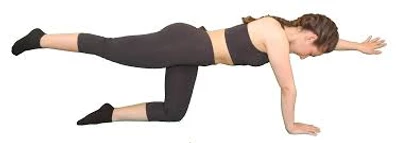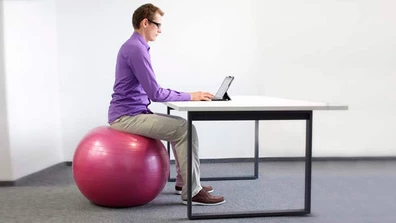What’s The Deal With Core Stability?
October 3, 2018
You might not know much about your ‘core’ but you’ve probably heard that it (and it’s stability) is important, particularly for preventing and treating lower back pain.
So Michael Scott clearly doesn’t know much about the ‘core’ (or the Marine Corps), but who can blame him? What is meant by the ‘core’, what does it do and how does it help with lower back pain?
When physiotherapists refer to the ‘core’ they’re generally referring to small, postural muscles which play a role in the control and maintenance of posture in the torso. ‘Core stability’ refers to your ability to control these muscles, the endurance of these muscles and your proprioceptive awareness of the positioning of your pelvis and spinal column.
When I first came out of university, core stability was all the rage for the treatment of long-term back pain. Our understanding of back pain has since developed and core stability is now considered less important for the treatment and prevention of back pain.

Where core stability is helpful is in the treatment and prevention of postural loading type back pain. That is, if your pain is caused by prolonged standing, for example, and you stand with your back jammed into extension, then improving the strength, endurance and control of muscles which combat your back dropping into extension, and improving your awareness of the posture of your back and pelvis, will be helpful in treating this pain and preventing it from recurring.
To complicate matters, we now know that some people’s back pain is more driven by fear and lack of confidence in their back. For these people, having too much emphasis on core stability, trying to achieve perfect postures and/or completely avoiding certain postures actually has a negative effect, by making people more fearful of their back pain and what it means.
For this reason, a happy medium needs to be reached in terms of improving postural muscles’ control, strength and endurance, and improving awareness of lower back and pelvic posture, and being comfortable with moving your back in different directions and loading it in different postures.
So how do you improve your core stability? Sit on a gym ball at work? Jump in to a pilates class?
It’s important to start with very simple exercises in a one-on-one setting to make sure that you get the basics and you get a feel for what you are trying to control. From there the exercises can be made more and more difficult, and you can start to join in with larger groups. I liken simply sitting on a gym ball at work before you have a good understanding of the basics to learning to play basketball by joining in a Perth Wildcats training session.

-
 What Can Make Neck Pain a Headache?
What Can Make Neck Pain a Headache?
Often people experiencing a headache are also experiencing neck pain/tightness a...
-
 How Physio Can Help Your Headaches
How Physio Can Help Your Headaches
Headaches are no fun. Some people will only experience short-term headaches ever...
-
 Muscle Strains
Muscle Strains
Winter sports are back and with them come more muscle strains, particularly hams...
